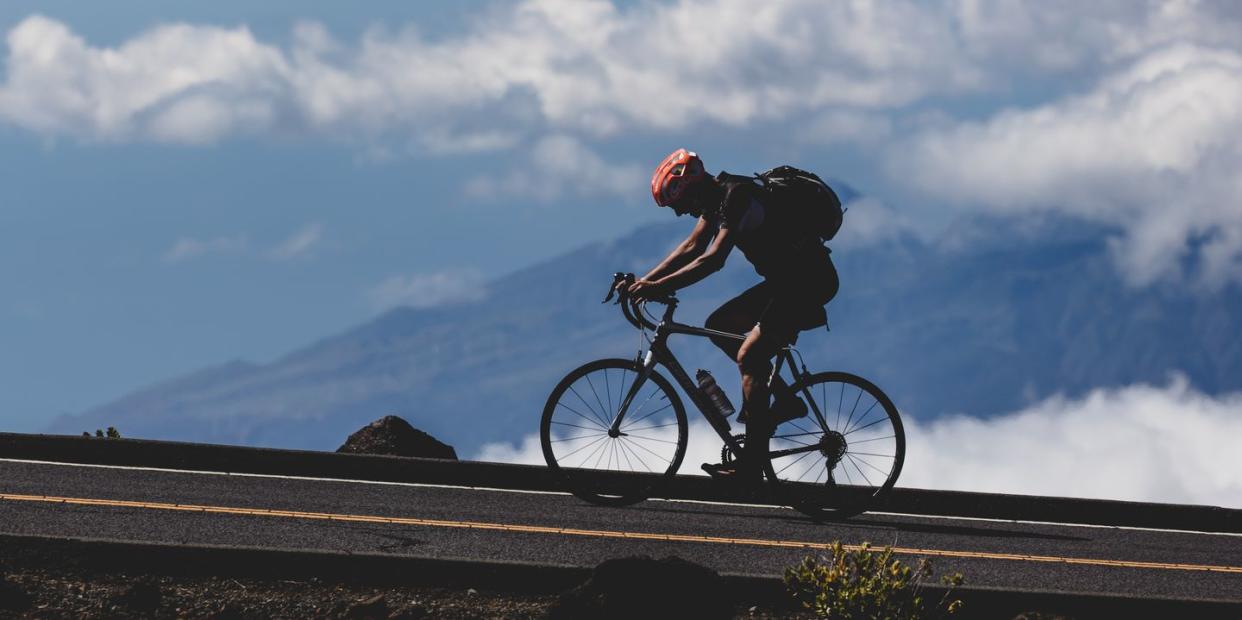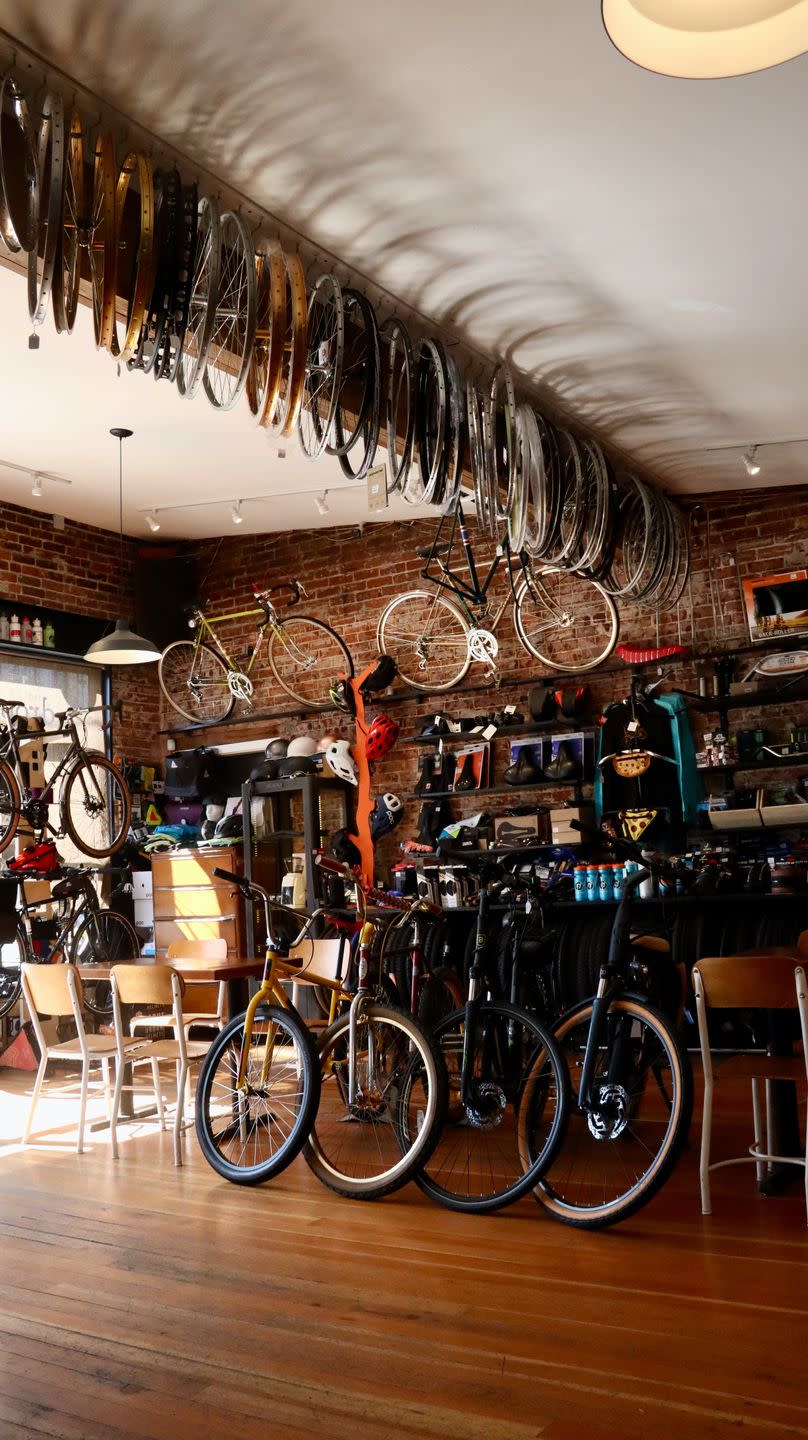Don't Do What I Did—How to Rent a Bike on Vacation

"Hearst Magazines and Yahoo may earn commission or revenue on some items through these links."
We probably all agree that there is nothing better than riding outside, but I live in Vermont. From December through March, I deal with single-digit temperatures, icy roads, and what sometimes feels like 15 feet of snow preventing me from saddling up.
Imagine how much I was looking forward to my vacation rides through the sunny desert landscapes of Joshua Tree National Park and Twentynine Palms in southern California. To make my trip even more adventurous, I was eager to rent a snazzy bike upon arrival instead of schlepping my hefty, gravel-grinding Boone 5 on a bus down to Logan Airport in Boston and then across the country.
Unfortunately, my trip did not go as planned. My advice? Don’t do what I did.
Here are five tips on how to have a better bike rental when you’re on vacation.
1. Use the cycling community
The first mistake I made was not relying on the many connections we all have through social media. If you’re traveling somewhere new to you, post on bike forums and websites such as Pinkbike for reviews of bike shops, as well as recommendations for trails and places to go. Don’t rely on Yelp and general review sites. Bike forums will have reviews and recommendations that are unbiased, straightforward, and less likely to have been written by the owner’s best friend.
Another way to use the local cycling community: Post exactly what you’re looking for and the location you plan to visit. Include your bike size and see if anyone has a spare bike they’re willing to loan for your vacation. Be willing to pay or barter for the bike loan.
2. Vet the Company You Rent From
Here’s why I recommended Step 1: I found an online rental company that offered to deliver a “race-class” road bike to my hotel, so I signed on without making inquiries about the company. I didn’t ask my cycling community if they’d heard of the company, nor did I read any reviews or call ahead to gauge their knowledge and expertise. Instead, I promptly filled out an online reservation form that included questions about my height, weight, desired size, and type of road bike I wanted. Sounds good, right? I booked what was advertised as one of their available top-of-the-line road bikes: A gray 49, Fuji SL 2.1 with Carbon Ultegra DI2 electronic shifting.
When I arrived in San Diego, though, and spoke with the owner, he said the size 49 was no longer available, and he insisted I should be on a 52 to 54 anyway, given my height.
Here’s the thing. Different bikes and models can run large or small. Another 5-foot-7 cyclist may not have my long arms and I might have longer legs or a shorter torso. I might be more or less flexible than another rider, and all of this affects what feels comfortable when it comes to bike size.

3. Go to the shop even if they say they’ll deliver
I met the owner of the company when he delivered to my hotel a well-worn 52 Fuji with mismatched tires on an old set of wheels, large 46-inch handlebars, and a stiff, narrow, men’s-specific saddle. The 49, which appeared to be available online, had been rented. The owner insisted a size 52 Fuji was the correct size for me.
I asked if he had any other saddles and if he had transferred the road bike measurements I had sent. “No,” he replied, “I don’t do bike fits. I rent up to 12 bikes a day, I don’t have time for that.”
I asked if he had a tape measure, so I could adjust the bike fit myself. He didn’t and blamed me for not asking him ahead of time to bring a tape measure.
Rather than apologizing for my not getting the bike I had ordered or even following my specifications, the owner said he’d been doing this for 27 years and that pros work for him. He was indignant that I had questioned his statements and voiced my opinion about bike fits.
The owner grumbled, attached my pedals to the bike, took a full three-day rental payment of $175, and then left in a huff. It was up to me to find a tape measure and use my tools to adjust the bike, and I knew that riding this bike could lead to a bigger problem than just discomfort. “Riding a poorly fitted bike can certainly contribute to injury risk,” Neil MacKenzie, DPT, and Ironman tells Bicycling. “An athlete will repeatedly move through a specific range of motion, producing varying levels of power, for tens of thousands of repetitions over the course of a ride. If the bike isn’t tailored to the individual, certain joints may experience excessive strain and become overloaded.”
Because all our bodies are different, we ought to test-ride every bike before renting or purchasing. A 48 in a Cannondale isn’t necessarily equivalent to a 48 or 49 in another brand’s frames. But it’s also not a 52.
4. Trust your gut. Speak up!
As I walked the bike back to my room from the hotel parking lot, I almost felt ashamed. By renting from someone I disagreed with so vehemently, was I telling him that it was okay to treat customers like that? That he could get away with it, and still make money?
From the first few pedal strokes on the 52 Fuji, it felt off for me. The handlebars were too wide, and the saddle was too far back, too stiff, and too narrow—beyond uncomfortable. I couldn’t imagine riding it for five minutes, let alone my planned fifty miles. I felt awkward and stretched out. Within an hour, I texted a request to return the rental. I expected a struggle and some pushback, but I was lucky.
I signed my message using the names of some of the cycling publications I write for, which worked for me, although I also think mentioning that you plan to write an online review might do the trick. An employee showed up, removed my pedals, and even apologized for his boss’s behavior.
5. Find bike shops that rent bikes
Back in my hotel room, I was frustrated because I was ready to ride, but bike-less. A quick Google Map search pointed me to positive, five-star reviews for Trek Bicycles North County. From my first phone conversation with a floor staff member, I felt listened to and heard. That location typically only rents mountain bikes, and they didn’t have an assigned fleet of road rental bikes, but Ian Escobedo, the shop manager, offered me a floor model of an Emonda, a bike I’ve been eyeing—well, drooling over—since I test-rode one in Vermont.
“Our mission is what we live every day,” says Escobedo, “to get people feeling good on bikes; to do so, we offer the best hospitality.” Nearly every Trek Bike shop offers bike rentals and, depending on their proximity to trails or roads, each bike shop carries different types of bikes. The beauty of stores with branches is that they can communicate with each other to find a bike rental to work for you.
If you’re solely traveling to major U.S. cities and looking to rent a bike, check out Unlimited Biking. They offer an assortment of different models and affordable rentals by the hour, as well as bike tours. Another company that rents bikes globally is VeloGuide. Their reach and rural town offerings of bike rentals come complete with knowledgeable bike guides, some of whom are former pro racers, and legends of their local roads.
Call local bike shops in advance to see if they rent. If they don’t, they might recommend someone who does. Speak to someone directly and have an open dialog to give you a sense of the company’s customer service and professionalism. The prices will vary greatly depending on where you are renting, the type of bike you choose, and how long you need it.
Bring some of your own gear
For no additional charge, and without my asking, Trek Bikes North County swapped out the broken bands of my Bontrager bike lights, which I had brought with me. The head shop mechanic double-checked the shifting. Another staff member offered the use of his bike computer mount because the shop didn’t have a spare one to rent with the Emonda. To my surprise, and again without my request, Ian, the manager, brought out a tape measure to adjust an Emonda size 50 to my fit specifications. He also matched the price of the other company’s rental.
Even if all goes well and you rent a well-fitting bike from kind, friendly, welcoming staff, remember to:
Carry a multitool with Allen keys: They’re small, light, and compact and can easily fit in your jersey pocket or saddle bag. Having a multitool on hand to lend is also a kind-hearted gesture to share a good rapport with fellow cyclists in need.
Pack some parts: I recommend bringing your own pedals and cycling shoes so you can clip like you're home. I also brought lights and some bands to attach to my rental, as well as a computer and mount so I could use a system with which I was familiar (and be less likely to get lost in a strange place). Likewise, if you’re married to the feel of your saddle, put it in your luggage. There’s no place like home for your heinie.
Finally! Enjoy your vacation rides: The next morning in Twentynine Palms, I hopped on the Emonda and pedaled off to explore the desert. I had no destination, and no set time when I needed to return. I rode past funky one-floor houses surrounded by cactus, rocks painted in bold primary colors, RVs, barking dogs, a sculpture garden of mixed geometric shapes rising from the dirt, and a tree made from recycled wine bottles. As I neared Joshua Tree National Park, I was shocked: patches of snow patterned the sand like the uneven spots of a cow. So much for completely escaping winter! I turned up an unpaved road and power lines cut through the sky. My body warmed and my legs settled into a rhythmic pace. I felt at peace. I was riding a well-fitted bike with a comfortable saddle on a sunny 50-degree day. Switching gears smoothly and effortlessly without frozen fingers, it was just me, the bike, and a sea of sand stretching to snow-capped mountains on the horizon.
You Might Also Like

